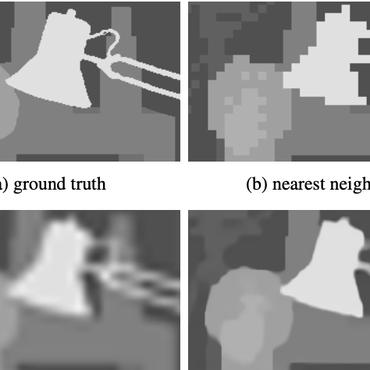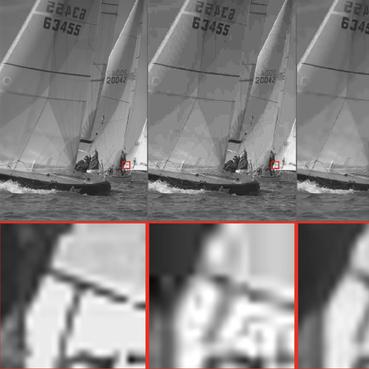Channel Attention based Iterative Residual Learning for Depth Map Super-Resolution
Despite the remarkable progresses made in deep-learning based depth map super-resolution (DSR), how to tackle real-world degradation in low-resolution (LR) depth maps remains a major challenge. Existing DSR model is generally trained and tested on synthetic dataset, which is very different from what would get from a real depth sensor. In this paper, we argue that DSR models trained under this setting are restrictive and not effective in dealing with real-world DSR tasks. We make two contributions in tackling real-world degradation of different depth sensors. First, we propose to classify the generation of LR depth maps into two types: non-linear downsampling with noise and interval downsampling, for which DSR models are learned correspondingly. Second, we propose a new framework for real-world DSR, which consists of four modules : 1) An iterative residual learning module with deep supervision to learn effective high-frequency components of depth maps in a coarse-to-fine manner; 2) A channel attention strategy to enhance channels with abundant high-frequency components; 3) A multi-stage fusion module to effectively re-exploit the results in the coarse-to-fine process; and 4) A depth refinement module to improve the depth map by TGV regularization and input loss. Extensive experiments on benchmarking datasets demonstrate the superiority of our method over current state-of-the-art DSR methods.
PDF Abstract CVPR 2020 PDF CVPR 2020 Abstract



 SUN RGB-D
SUN RGB-D
 Middlebury
Middlebury
 ApolloScape
ApolloScape
 Middlebury 2014
Middlebury 2014